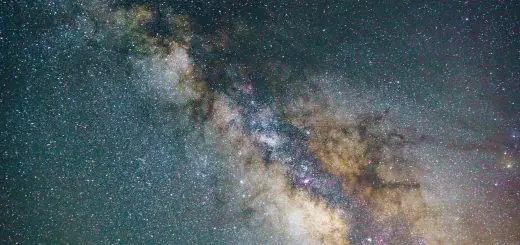Stargazing Travel: Best Dark-Sky Reserves Worldwide

Looking for more amazing products? Check out our online store and explore our collection here! Happy shopping!
Before diving in, please note: This post is for informational purposes only. If you’d like to know more about how we approach topics, feel free to check out our friendly Disclaimer Page.
Hey there, amazing readers! 
We’re committed to delivering quality posts, and your support (even just sticking around despite the ads) means everything to us. So, bear with us, and thanks for helping us keep the good vibes rolling. Now, on to the fun stuff!
TRANSLATE BUTTON AT THE END OF THE ARTICLE
A Quick Overview
Stargazing is more than just a hobby; it’s an invitation to connect with the cosmos.
Dark-sky reserves around the globe offer an exceptional canvas filled with stars, planets, and celestial wonders.
These locations are safeguarded from light pollution, ensuring that our nocturnal skies are pure and breathtaking.
If you’re an astronomy enthusiast or just someone who loves the beauty of the night sky, you’re in for a treat!
In this article, we’ll explore the best dark-sky reserves worldwide, why they’re essential, and tips for planning your stargazing adventure.
So grab your telescope, and let’s dive into this stellar journey together!
Discover the Magic of Dark-Sky Reserves Worldwide
Dark-sky reserves are havens for stargazers, created to protect the night sky from artificial light pollution.
These areas maintain a natural darkness, allowing the beauty of the cosmos to shine through.
Each reserve offers a unique experience, showcasing constellations, shooting stars, and the Milky Way in ways often unseen in urban areas.
Visiting a dark-sky reserve is like stepping back in time, where the stars are the only lights illuminating your surroundings.
Imagine lying on a blanket, surrounded by the fragrance of pine trees, with only the soft whispers of the night and the brilliance of the cosmos above.
You might even catch a glimpse of the International Space Station slicing through the sky!
Each reserve also hosts educational programs and stargazing events.
Many provide telescopes, expert guidance, and even workshops on astrophotography.
The community spirit at these locations is palpable.
You’ll meet fellow stargazers who share your passion, exchange tips, and create lasting memories.
Whether you’re a seasoned astronomer or a curious traveler, dark-sky reserves are gateways to understanding the universe’s mysteries.
They remind us of our place in the cosmos and the sheer wonder of it all.
So, which reserves should you put on your travel list?
Let’s find out!
Why Stargazing Travel is a Must for Astronomy Lovers
Stargazing is not just about looking at the stars; it’s an experience that speaks to the soul.
As an astronomy lover, the thrill of discovering new celestial phenomena is unmatched.
Traveling to dark-sky reserves amplifies this experience, providing an environment where you can truly appreciate the night sky.
Imagine the joy of witnessing a meteor shower, where dozens of shooting stars streak across the sky.
Or spotting constellations you’ve only seen in books.
When you travel for stargazing, you immerse yourself in the wonders of the universe.
It’s like a cosmic treasure hunt that keeps you on your toes!
Moreover, being away from city lights allows you to reconnect with nature.
The serenity of dark skies can be therapeutic.
It’s a break from our fast-paced lives.
Discover "The Traveler’s Guide: Your Ultimate Companion for Every Adventure
"
Instead of scrolling through screens, you find yourself captivated by the dance of celestial bodies.
Many people find that a night under the stars is a great way to recharge and gain a new perspective.
Stargazing travel also fosters community.
Many reserves host events where you can meet people who share your interests.
Discussions about the latest discoveries in astronomy, tips on telescope use, or even just chatting about favorite constellations can spark lifelong friendships.
Lastly, these trips often lead to personal growth.
Each journey can spark curiosity, prompting you to learn more about the universe.
You might find yourself asking questions you never considered before.
Maybe that’s the real magic of stargazing travel—it’s not just about the stars; it’s about the connections and discoveries along the way.
Top 5 Dark-Sky Reserves in North America to Explore
North America is home to some extraordinary dark-sky reserves that beckon stargazers from all over.
Here are my top five recommendations:
Big Bend National Park, Texas: Recognized for its expansive sky, this park is a true stargazer’s paradise.
With minimal light pollution and diverse landscapes, the park offers a spectacular backdrop for celestial observations.
The park even hosts an annual star party.
Cherry Springs State Park, Pennsylvania: Known as one of the darkest places in the eastern U.S., Cherry Springs is perfect for night-time adventures.
The park has an astronomy observation field equipped with telescopes and hosts regular star parties.
Jasper National Park, Alberta: This gem in the Canadian Rockies not only offers stunning vistas but also an incredible dark-sky preserve.
Jasper is renowned for its clear skies and hosts the Jasper Dark Sky Festival, drawing astronomy enthusiasts from across the globe.
Death Valley National Park, California: Known for its extreme landscapes, Death Valley is also one of the best places for stargazing.
The park’s enormous size and remote location mean that light pollution is nearly non-existent.
Mont-Mégantic National Park, Quebec: This park boasts a dedicated observatory and a vibrant astronomy community.
The park hosts night-time activities and provides visitors with opportunities to learn about the stars and planets.
Each of these reserves offers a unique stargazing experience and is worth a visit!
Europe’s Hidden Gems: Dark-Sky Reserves You Should Visit
Europe is dotted with dark-sky reserves, each revealing a different story written in the stars.
Here are a few hidden gems you won’t want to miss:
Exmoor National Park, England: Known as the first International Dark Sky Reserve in Europe, Exmoor offers breathtaking views of the Milky Way.
The park frequently hosts stargazing events, making it a perfect spot for both novice and expert astronomers.
Aigüestortes i Estany de Sant Maurici National Park, Spain: Nestled in the Pyrenees, this park features stunning landscapes and minimal light pollution.
The starry nights here are mesmerizing, and the park often organizes guided stargazing tours.
Cévennes National Park, France: This national park is not only a UNESCO World Heritage site but also a dark-sky reserve.
The clear skies offer a perfect opportunity to spot constellations and planets alike!
Tatra National Park, Poland: The Tatra Mountains provide a dramatic backdrop for stargazing.
The park features organized stargazing events and offers a chance to see the famous Orion Nebula.
Sierra de Guadarrama National Park, Spain: Just outside Madrid, this park is a fantastic spot for urban dwellers looking for a quick escape to the stars.
The park is committed to preserving its dark skies and frequently hosts astronomy nights.
Exploring these reserves can lead to unforgettable experiences as you gaze at stars that have inspired stories and legends throughout history.
A Journey to the Southern Hemisphere’s Night Skies
The southern hemisphere offers some of the most stunning celestial views.
Let’s explore a few dark-sky reserves that promise unforgettable experiences:
Aoraki Mackenzie International Dark Sky Reserve, New Zealand: This reserve is famous for its unobstructed views of the southern skies.
The Milky Way is particularly pronounced here, and the area hosts several stargazing festivals a year.
Namib Desert, Namibia: The Namib Desert is often hailed as one of the best places to stargaze on Earth.
With its dry air and minimal light pollution, you can see the Southern Cross and countless other celestial wonders.
Atacama Desert, Chile: Renowned for having some of the clearest skies in the world, the Atacama is home to several observatories.
The area attracts astronomers worldwide who flock to see its stunning night views.
Royal Observatory of Greenwich, South Africa: This observatory offers not only a historical perspective but also a fantastic viewing platform for stargazing.
It’s a great place to learn and observe the southern hemisphere’s stars.
St.
Lucia, South Africa: Known for its commitment to protecting dark skies, St.
Lucia offers breathtaking views of the stars.
Guided stargazing tours are available, making it accessible for all.
Visiting these southern gems can offer a completely different perspective on the night sky and expose you to constellations not visible in the northern hemisphere.
Essential Tips for Planning Your Stargazing Adventure
Planning a stargazing trip?
I’ve got some easy tips to make your experience memorable:
Choose the Right Location: Research dark-sky reserves and national parks.
Look for places with minimal light pollution and high elevation.
Check the Moon Phases: A new moon is ideal for stargazing since the sky will be darker.
Avoid nights with a full moon, as its brightness can wash out dimmer stars.
Look at Weather Conditions: Clear skies are crucial.
Check weather forecasts and try to choose a date with low humidity and no cloud cover.
Plan for the Season: Different seasons offer unique celestial events.
Research what constellations and meteor showers are visible during your visit.
Arrive Early: Get there before sunset to set up your spot.
This gives you time to acclimate your eyes to the darkness.
Bring the Right Gear: Ensure you have binoculars or a telescope if you desire.
A comfortable blanket and warm clothes are essential!
Educate Yourself: Familiarize yourself with constellations and celestial events that may occur during your visit.
Apps like Star Walk or SkySafari can enhance the experience.
Stay Safe: Flashlights, preferably red ones, will help you navigate without ruining your night vision.
Be mindful of wildlife and terrain as well.
Bring Snacks and Drinks: Stargazing can take time!
Pack some snacks and hot drinks to keep you comfortable.
Take Your Time: Don’t rush.
Enjoy the beauty above and soak in the experience.
Sometimes, the most magical moments happen when we simply sit and observe.
With these tips in your toolkit, you’re ready to embark on your stargazing adventure!
Best Times of Year for Stargazing in Each Region
Timing your stargazing trip can greatly enhance your experience.
Let’s break it down by region:
North America: Late spring to early fall, particularly August for the Perseid meteor shower.
The skies are typically clear, and many parks host events.
Europe: Late summer and early autumn are ideal.
Look out for the Geminid meteor shower in December, which is particularly vibrant.
Southern Hemisphere: Winter months (June to September) are often the clearest, especially in places like New Zealand and Australia.
The Milky Way is also prominent in the southern winter skies.
Tropical Regions: These areas can offer good views year-round.
However, the dry season often between May and October is best for minimal cloud cover.
Knowing the best times can help you plan your trip around celestial events, making your experience even more exciting!
Gear Up: Must-Have Equipment for Stargazing Travelers
Having the right gear can make a world of difference in your stargazing experience.
Here’s a handy list of essentials:
Binoculars or Telescope: While the naked eye can see plenty, binoculars or a telescope can enhance your views of distant stars and planets.
Star Charts or Apps: Having a star chart or a stargazing app can help you identify celestial objects and constellations easily.
Comfortable Blanket: For lying back and enjoying the view, a good blanket is essential.
Choose one that’s easy to carry.
Red Flashlight: This helps maintain your night vision when you need to see your gear or read your maps.
Warm Clothes: Nights can get chilly, even in summer.
Dress in layers so you can stay warm and comfortable.
Snacks and Drinks: Pack a thermos of hot cocoa or coffee and some treats to keep your energy up.
Camera: If you’re interested in astrophotography, bring a camera with a long exposure capability and a tripod.
Notebook: Jot down your observations and experiences.
This can be a wonderful keepsake of your adventures.
With these items in tow, you’ll be well-prepared to make the most of your stargazing experience!
How to Capture the Night Sky: Photography Tips
Capturing the beauty of the night sky can be incredibly rewarding.
Here are some tips to help you photograph the cosmos:
Use a Tripod: A sturdy tripod prevents camera shake during long exposures.
This is crucial for clear night sky photos.
Long Exposure Settings: Set your camera to a long exposure (15-30 seconds) to capture more light from stars.
Experiment to find the right balance.
Use Manual Focus: Autofocus can struggle in low light.
Switch to manual focus to set your lens to infinity.
Wide Aperture: Use a wide aperture (f/2.8 or lower) to let in as much light as possible.
This will enhance the details in your photos.
Low ISO Settings: Start with an ISO of 800-1600.
A higher ISO can introduce noise, which is something to avoid when capturing the night sky.
Experiment with Composition: Include elements like trees, mountains, or buildings for depth.
Try different perspectives to create unique shots.
Look for Meteor Showers: Plan your photography sessions around meteor showers.
Use a wide-angle lens to capture more of the sky.
Post-Processing: Use editing software to enhance your photos.
Adjust brightness, contrast, and color balance for the best results.
Be Patient: Sometimes the best shots come after waiting for the right moment.
Enjoy the process!
With practice and patience, you’ll be able to capture stunning images of the night sky to share with friends and family.
Family-Friendly Dark-Sky Reserves for All Ages
Stargazing can be a fantastic family activity.
Here are some family-friendly dark-sky reserves that make for great adventures:
Grand Canyon National Park, Arizona: With diverse activities, this park offers stunning night skies.
Kids will love ranger-led programs that make astronomy fun!
Acadia National Park, Maine: This park hosts family-oriented stargazing events, complete with educational talks to engage young minds.
Ohiopyle State Park, Pennsylvania: It’s not only about stars!
Families can enjoy hiking, biking, and riverside activities during the day and stargazing at night.
Glacier National Park, Montana: Known for its breathtaking views, Glacier also offers educational programs geared towards families with children.
Lake District National Park, England: The park is family-friendly and offers various outdoor activities alongside dark-sky events for stargazing.
These reserves not only provide exceptional stargazing opportunities but also cater to families looking for adventure and education.
Unique Experiences Near Dark-Sky Reserves to Enjoy
Exploring dark-sky reserves can come with delightful surprises!
Here are some unique experiences you might find nearby:
Night Hikes: Some parks offer guided night hikes, where you can explore the trails under the starlit sky.
It’s an exhilarating experience!
Workshops and Events: Many dark-sky reserves host workshops on astronomy, astrophotography, or even storytelling related to the stars.
Wildlife Viewing: Some areas have unique nocturnal wildlife.
If you’re lucky, you might spot owls or other night creatures while stargazing.
Local Cuisine: Explore local eateries and try regional specialties.
Enjoy a meal while discussing the cosmos!
Cultural Events: Some reserves have cultural programs that delve into indigenous astronomy.
These events provide a richer understanding of the night sky.
Camping: Many dark-sky reserves offer camping options.
Spending the night under the stars is an experience in itself!
Art and Astronomy: Some parks feature art installations that celebrate the night sky, merging culture and astronomy in beautiful ways.
Photography Tours: Join guided photography tours that focus on capturing the night sky, allowing you to learn from experts.
Stargazing Apps: Download apps that help identify stars and planets.
Some guided tours incorporate these technologies for an enhanced experience.
Engaging in these activities can elevate your visit, making it a well-rounded adventure that combines the beauty of stargazing with exploration and learning.
Embrace the Stars: The Joy of Stargazing Travel
Stargazing travel is about the exhilarating feeling of witnessing the vastness of the universe.
It’s a journey that brings us closer to nature and enhances our appreciation for life’s wonders.
When I think back to my own adventures, one memory stands out.
I once stood in the Mojave Desert, surrounded by friends, marveling at the Milky Way stretching endlessly above us.
We shared stories, laughed, and soaked in the beauty of the cosmos.
That night reminded me that the universe is ours to explore, and the connections we build while doing so are what truly matter.
So, whether you’re planning a solo trip or a family adventure, embrace the stars.
Take that leap into the unknown and revel in the beauty of the night sky.
Each trip is an opportunity to learn, grow, and build connections with fellow stargazers.
Conclusion
Stargazing travel opens up a world of discovery, connection, and joy.
The dark-sky reserves we explored are just the tip of the iceberg.
Each location offers unique experiences that can leave lasting impressions.
As you plan your next adventure, remember to embrace the beauty of the cosmos.
The stars are waiting for you—ready to share their secrets and stories.
Whether you’re gazing at the Milky Way, counting shooting stars, or simply enjoying the serenity of a dark sky, the universe has so much to offer.
So grab your gear, gather your friends, and let’s go explore those magnificent night skies!

The Enlightenment Journey is a remarkable collection of writings authored by a distinguished group of experts in the fields of spirituality, new age, and esoteric knowledge.
This anthology features a diverse assembly of well-experienced authors who bring their profound insights and credible perspectives to the forefront.
Each contributor possesses a wealth of knowledge and wisdom, making them authorities in their respective domains.
Together, they offer readers a transformative journey into the realms of spiritual growth, self-discovery, and esoteric enlightenment.
The Enlightenment Journey is a testament to the collective expertise of these luminaries, providing readers with a rich tapestry of ideas and information to illuminate their spiritual path.
Our Diverse Expertise
While our primary focus is on spirituality and esotericism, we are equally passionate about exploring a wide range of other topics and niches 

To ensure we provide the most accurate and valuable insights, we collaborate with trusted experts in their respective domains 
Our blog originally focused on spirituality and metaphysics, but we’ve since expanded to cover a wide range of niches. Don’t worry—we continue to publish a lot of articles on spirituality! Frequently visit our blog to explore our diverse content and stay tuned for more insightful reads.
Hey there, amazing reader! 
Check out our store here and take a peek at some of our featured products below! Thanks for being awesome!











